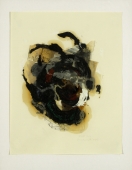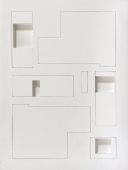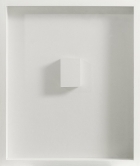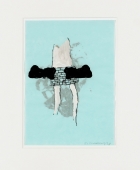
Gallery | David Kordansky Gallery
5130 W. Edgewood Place
USA - Los Angeles CA 90019 - United States Google Map
T.: +1 - 323 - 935 3030
Web: http://www.davidkordanskygallery.com/ Email: info@davidkordanskygallery.com
https://www.artist-info.com/museum/David-Kordansky
 Exhibition Announcements Exhibition Announcements 
| Learn more about this service |
|---|

Brian Calvin - Charles Garabedian - John McAllister - Zach Harris |
||||||
Brian Calvin, Charles Garabedian, John McAllister, Zach HarrisNovember 19, 2011 – January 21, 2012
PRESS RELEASEDavid Kordansky Gallery is very pleased to announce an exhibition of paintings by Brian Calvin, Charles Garabedian, Zach Harris, and John McAllister. While it will consist mostly of new work, the show will also feature paintings by Charles Garabedian dating back to 1982 that synthesize these four Los Angeles-based artists' pursuit of a highly personal, even idiosyncratic visual vocabulary. For more than 40 years, Garabedian has served as a trailblazing example of an artist willing to take on the central narratives of the art historical tradition from the geographical, intellectual, and spiritual periphery. In particular, his poetic use of the figure, often with a nod to ancient or classical literary sources, has long provided an alternative to what is traditionally understood as the development of postwar American painting. The younger artists in the exhibition continue to use figuration as a vessel for abstract forms, literary narrative, and conceptual meditation. They employ the medium of painting itself in a similar manner, using it to address the broader and deeper concerns that drive artists back to the studio again and again. Due to the varied nature of their respective practices, the differences between these artists are what unite them. Indeed, insistence on difference––from accepted notions of style and good taste, and from the strains of abstract and conceptual painting that seem to dominate the contemporary landscape––can be said to be one of the defining factors of their work. Zach Harris embodies this approach in paintings that depict imaginary landscapes set in layers of geometric relief. Like sculptural landscapes built around pictorial landscapes, Harris' hand-crafted wooden surrounds are calibrated in terms of their colors and shapes so that the eye moves between the implied world inside the painting and the material, sculptural fact of the object itself. Intense patterning serves as both an organizing principle and a means of accessing a sensory realm that exceeds the explicity visual. The work shares its force of intention with cultural artifacts as diverse as Tibetan mandalas, astrological charts, and the Arcadian vistas of Poussin, i.e. visual documents in which aesthetic function bridges the intimate world of introspection and the public context of architectural space and design. His paintings create (and by implication are creations of) worlds within worlds, environments where mental and physical planes are regarded as ever-evolving functions of one another. Garabedian's large-scale works also allow for this kind of immersive experience, as do the invented scenes in John McAllister's paintings. Here too, the landscape genre serves as a window through which to view a less tangible world, a vision of painterly interiority comprised of art historical reference and rogue optical patterning. McAllister's use of a Nabis-like palette to demarcate both flat geometric motifs and dimensional vistas evokes landscapes that are equal parts Southern France and Southern California. Furthermore, the compressed layering of imagery that surrounds them seems to draw inspiration from the all-over array of windows spread across digital desktops as much as it does from the century-old advances of Matisse. There is no separation between the decorative, the functional, and the sublime. Though the work is manifestly representational, what it represents is the strange, unseen familiarity at the core of everyday things. In recent years Brian Calvin's work has been included in Knock, Knock!, Anderson Gallery, VCU Arts, Virginia; Electric Mud, Blaffer Gallery, The Art Museum of the University of Houston; If Everybody Had an Ocean - Brian Wilson: an Art Exhibition, Tate St. Ives, St. Ives (travelled to CAPC, Bordeaux, France); After Cezanne, Museum of Contemporary Art, Los Angeles; Baja to Vancouver: The West Coast and Contemporary Art, CCA Wattis Institute of Contemporary Arts, San Francisco; and Red Eye, Rubell Family Collection, Miami. Recent solo shows have been held at Anton Kern Gallery, New York and Corvi-Mora, London. Charles Garabedian was the subject of a major 2011 retrospective at the Santa Barbara Museum of Art. Other recent solo exhibitions include shows at L.A. Louver, Venice, CA and Betty Cunningham Gallery, New York. His work is currently on view in Under the Big Black Sun: California Art, 1974-81, Museum of Contemporary Art, Los Angeles; and L.A. Raw: Abject Expressionism in Los Angeles 1945–1980, From Rico Lebrun to Paul McCarthy, Pasadena Museum of California Art; these are both part of the broad Getty initiative Pacific Standard Time. Over the course of his career he has been included in some of the most important international survey exhibitions, including the Whitney Biennial, the Corcoran Biennial Exhibition of Contemporary American Painting, and the Venice Biennale. Zach Harris was recently included in New Age End of the World, Taxter and Spengemann, New York and Shape of the Problem, Elizabeth Leach Gallery, Portland; he also curated Midnight at Malibu – a nocturnal survey of contemporary Los Angeles Artists at Meulensteen Gallery, New York. Solo exhibitions include Max Protetch Gallery, New York and Elizabeth Leach Gallery, Portland. John McAllister's work will be featured in the upcoming exhibition American Exuberance, Rubell Family Collection, Miami. Other recent group exhibitions include Impossible Vacation, White Flag Projects, St. Louis and Harlequin, Sister, Cottage Home, Los Angeles. He has been the subject of solo shows at James Fuentes LLC, New York and Ribordy Contemporary, Geneva.
|
||||||




































